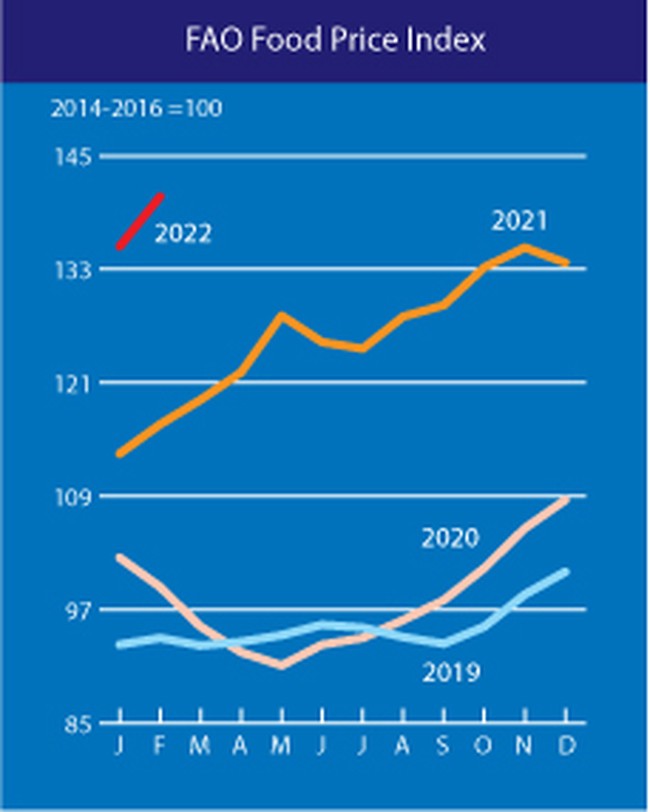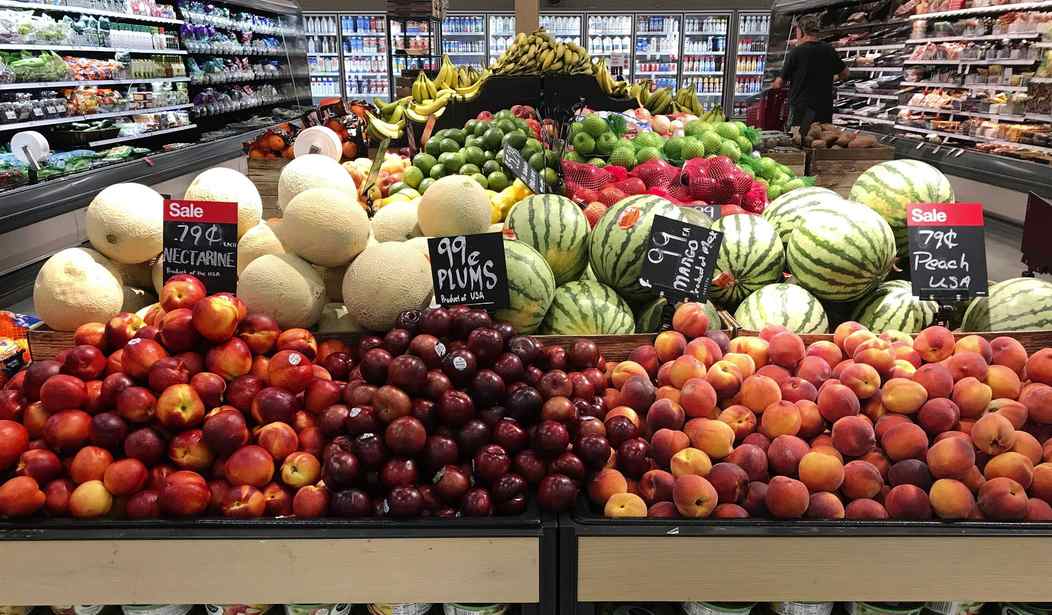If your grocery bills continue to frustrate you, you’re not alone. The Food and Agriculture Organization of the United Nations (FAO) released its report on worldwide food prices for February, and prices hit a record high last month. The February FAO Food Price Index (FFPI) reached a new high of 140.7 points, which reflects an increase of 3.9% over January and a whopping 20.7% over this time last year.
The FFPI serves as a “measure of the monthly change in international prices of a basket of food commodities,” notes the FAO. This month’s increase was largely due to “large increases in vegetable oil and dairy price sub-indices.” Cereal and meat prices are up as well, though not as high, while sugar prices are down.

“A much bigger push for food price inflation comes from outside food production, particularly the energy, fertilizer and feed sectors,” said FAO economist Upali Galketi Aratchilage. “All these factors tend to squeeze profit margins of food producers, discouraging them from investing and expanding production.”
The February FFPI dates to before Russia’s invasion of Ukraine, but there are legitimate concerns that the war in Ukraine will add to food price woes, as it has taken place at the outset of spring planting season.
“The stoppage of grain exports out of Ukraine was confirmed on Monday as the country said all ports will be closed until the end of the Russian invasion, though there is a chance that supplies for the next season out of both Ukraine and Russia could also be in jeopardy pending the outcome of the war,” writes Karen Braun at Reuters. “Spring grain planting is right around the corner for both countries, most importantly corn for Ukraine and spring wheat for Russia, and it is unclear whether the ongoing conflict will impact production either physically or economically.”
Related: Inflation Costs American Households $276 More Per Month
Ukraine accounts for 16% of worldwide corn exports and 12% of wheat, so a crucial producer is hampered by the invasion just in time for spring planting, as well as closed ports. Even though Ukraine still has much of its 2021 corn crop available, the fact that ports are closed — and some may be damaged — renders these ready imports useless.
“Although Ukraine’s accumulated exports are up sharply from last year’s thin season, the shipment stall comes at a bad time since there is still a lot of progress left,” notes Brown.
What’s particularly sad is that Russia’s invasion comes on the heels of a record corn crop in Ukraine. Farmers were already concerned about high input costs before the invasion, but corn crops aren’t the only items that Russia’s actions against Ukraine could affect.
“A severe disruption in spring planting in Ukraine would also have a large impact on the global vegetable oil market as the Black Sea country supplies half of sunflower oil trade,” Brown points out.
“World wheat prices increased by 2.1 percent, largely reflecting new global supply uncertainties amidst disruptions in the Black Sea region that could potentially hinder exports from Ukraine and the Russian Federation, two major wheat exporters,” the FAO states, but American inflation is also playing a role in food prices outside the U.S.










Join the conversation as a VIP Member